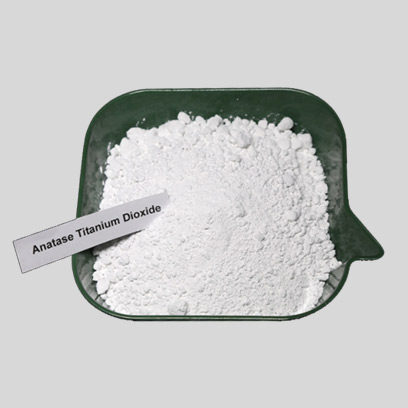
Dis . 06, 2024 20:20 Back to list
precipitation of titanium dioxide equation
Understanding the Precipitation of Titanium Dioxide An In-Depth Look
Titanium dioxide (TiO2) is a versatile and widely used material, known for its excellent whiteness and opacifying properties. Its applications span various industries, including paints, coatings, plastics, paper, and even the food industry, where it serves as a colorant. One of the key processes in the production of titanium dioxide is the precipitation process, which can be explained through a series of chemical equations and principles.
The precipitation of titanium dioxide typically occurs from titanium-bearing minerals such as ilmenite or rutile through chemical treatments. The first step in TiO2 production often involves the extraction of titanium, usually through acid leaching, which involves the reaction of titanium ores with sulfuric acid (H2SO4) or hydrochloric acid (HCl). The overall reaction for this process can be represented as
\[ \text{TiO}_2 + 2\text{H}_2\text{SO}_4 \rightarrow \text{Ti(SO}_4)_2 + 2\text{H}_2\text{O} \]
This reaction yields titanium sulfate, which is further processed to precipitate titanium dioxide.
The next stage involves the hydrolysis of titanium sulfate to form titanium hydroxide, which can be expressed by the following equation
\[ \text{Ti(SO}_4)_2 + 4\text{H}_2\text{O} \rightarrow \text{Ti(OH)}_4 + 2\text{H}_2\text{SO}_4 \]
This step is crucial as it leads to the formation of a titania gel
. The titanium hydroxide can be further converted to titanium dioxide through calcination, a process involving heat treatment to remove water and sulfur compounds, resulting in the formation of TiO2\[ \text{Ti(OH)}_4 \xrightarrow{\text{heat}} \text{TiO}_2 + 2\text{H}_2\text{O} \]
precipitation of titanium dioxide equation

The precipitation of titanium dioxide is influenced by several factors such as temperature, pH, concentration of reactants, and the presence of additives that can either promote or hinder the process. Generally, the precipitation process is conducted in controlled environments to ensure desired particle size and morphology of the TiO2 particles, which are critical for their functionality in applications.
Moreover, there are two primary methods for producing titanium dioxide the sulfate process and the chloride process. The sulfate process uses sulfuric acid and produces a high level of waste materials, which can pose environmental concerns. In contrast, the chloride process involves the reaction of titanium ores with chlorine gas, leading to titanium tetrachloride (TiCl4), which can be easily purified and converted into TiO2 with minimal waste. The equation for the chloride process can be summarized as
\[ \text{TiO}_2 + 2\text{Cl}_2 + 2\text{C} \rightarrow \text{TiCl}_4 + 2\text{CO} \]
Subsequent hydrolysis of titanium tetrachloride yields titanium dioxide
\[ \text{TiCl}_4 + 2\text{H}_2\text{O} \rightarrow \text{TiO}_2 + 4\text{HCl} \]
The resulting TiO2 can be either anatase or rutile, depending on the thermal treatment it undergoes, which significantly affects its properties and applications.
The environmental impact of titanium dioxide production, especially from the sulfate process, has led to increased interest in more sustainable practices, including recycling and reducing waste generation. Additionally, researchers are exploring green synthesis methods that utilize less harmful chemicals or by-products while producing TiO2.
In conclusion, the precipitation of titanium dioxide is a significant process in the chemical industry that is governed by complex chemical reactions and external factors. Understanding these processes is essential for improving efficiency, reducing environmental impact, and enhancing the quality of the final product. As industries continue to demand high-performance materials, the refining of TiO2 production methods will become increasingly important to ensure sustainability and meet global market needs.
-
High Quality China Black Iron Oxide Powder Supplier Competitive Price & Fast Delivery
NewsJul.08,2025
-
High Quality Titanium Dioxide Used in Rubber – Trusted Supplier & Factory Price
NewsJul.08,2025
-
High Purity Barium Sulfate Particle Size - Wholesale Manufacturer from China
NewsJul.07,2025
-
Premium Titanium Dioxide Lomon R-996 Supplier – Quality & Wholesale Price from China
NewsJul.07,2025
-
Top Titanium Manufacturers in China - Quality Titanium Dioxide Supplier & Production Line Solutions
NewsJul.06,2025
-
OEM Titanium White Supplier & Factory – High Purity, Consistent Quality for Industrial Use
NewsJul.06,2025
